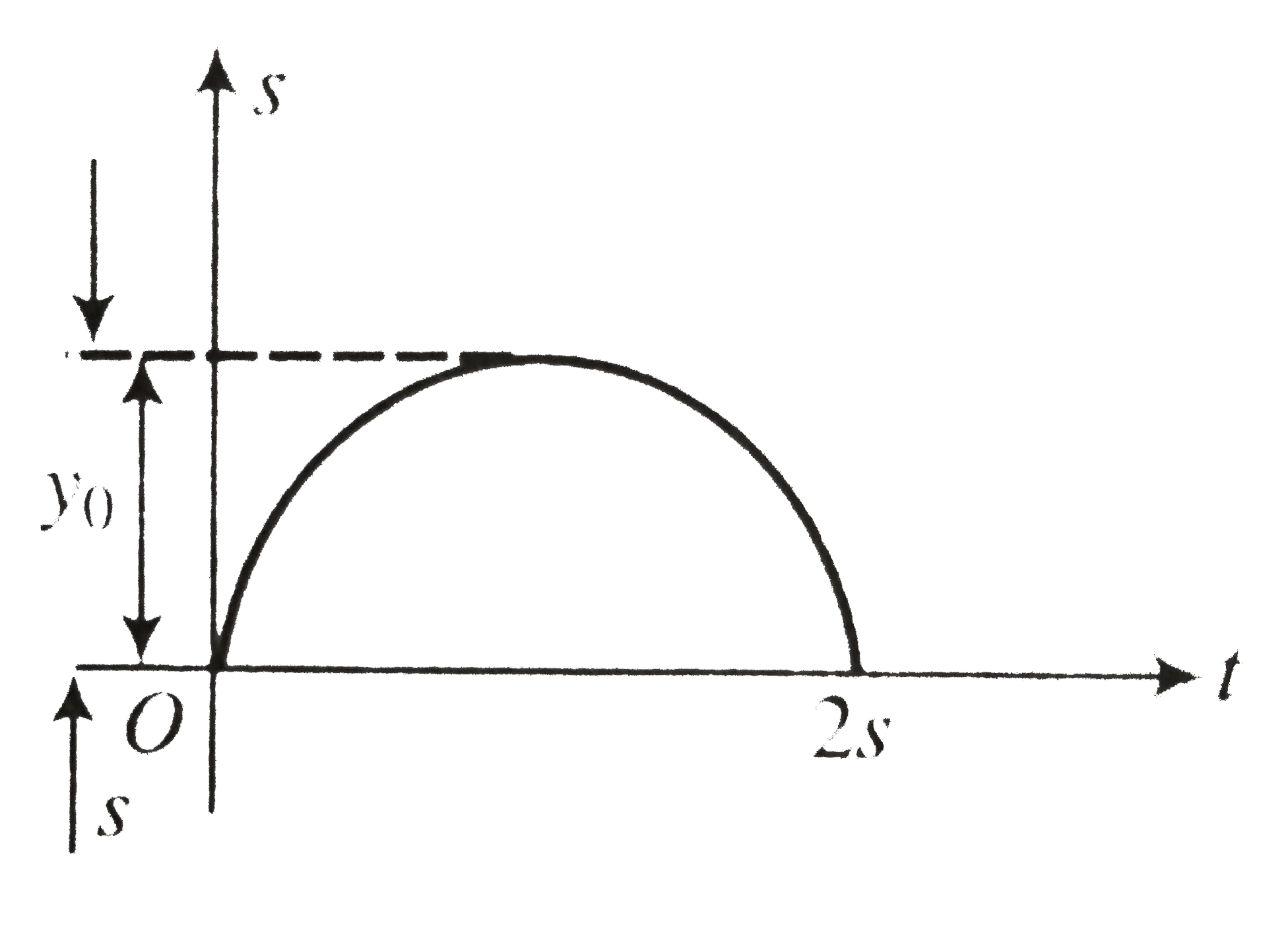The intantaneous coordinates of a particle are x=(8t−1)m and y=(4t2)m. Calculate (i) the average velocity of the particle during time interval from t=2s to t=4s (ii) the instantaneous velocity of the particle at t=2s.
(i) Given that x(t)=(8t−1) m and y=(4t2)m
r(t)=(8t−1)ˆi+(4t2)ˆj .....(i)
At t=2s, →r1=15ˆi+16ˆj
At t=4s, →r2=31ˆi+64ˆj
∵ Displacement, →r2−→r1=(31ˆi+64ˆj)−(15ˆi+16ˆj)
=16ˆi+48ˆj
∴ Average velocity →vav=→r2−→r1→t2+→t1
16ˆi+48ˆj4−2
=(8ˆi+24ˆj)ms−1
(ii) Differentianting Eqn. (i) w.r.t. time,
→v=d→rdt=8ˆi+8tˆj
At t=22s,→v=8ˆi+16ˆj
Topper's Solved these Questions
Similar Questions
The velocity of a particle are given by (4t–2) ms–1 along x–axis. Calculate the average acceleration of particle during the time interval from t = 1 to t = 2s.
View SolutionA particle moves rectilinearly possessing a parabolic s-t graph. Find the average velocity of the particle over a time interval from t=12s→t=1.5s.

View Solution
Knowledge Check
The velocity of a particle is zero at time t = 2s, then
Adisplacement must be zero in the interval t = 0 to t = 2 s.Bacceleration may be zero at t = 2 s.Cvelocity must be zero for t>2s .Dacceleration must be zero at t = 2 s.If S=t4−5t2+8t−3, then initial velocity of the particle is
A0B8 units / secC6 units/secD5 units / secthe angular velocity omega of a particle varies with time t as ω=5t2+25rads. the angular acceleration of the particle att=1s is
A10rads2B5rads2CZeroD3rads2
A particle is at x=5m at t=0,x=−7m at t=6s and x=+2m at t=10s, find the average velocity of the particle during the interval (a) t=0 to t=6s, (b) t=6s to t=10s, (c) t=0 to t=10s
View SolutionThe position of a particle moving along the x axis is given in centimeters by x=9.75+1.50t3, where t is in seconds. Calculate (a) the average velocity during the time interval t=2.00s to t=3.00s, (b) the instantaneous velocity at t=2.00s , (c) the instantaneous velocity at t=3.00s, (d) the instantaneous velocity at t=2.50s, and (e) the instantaneous velocity when the particle is midway between its positions at t=2.00s and t=3.00s . (f) Graph x versus t and indicate your answers graphically
View SolutionDisplacement of a particle of mass 2 kg varies with time as s=(2t2−2t+10)m. Find total work done on the particle in a time interval from t=0 to t=2s.
View SolutionThe displacement (in metre) of a particle moving along x-axis is given by x=18t+5t2. Calculate (i) the instantaneous velocity t=2s (ii) average velocity between t=2s to t=3s (iii) instantaneous acceleration.
View SolutionThe velocity of the particle at any time t is given by vu=2t(3−t)ms−1. At what time is its velocity maximum?
View Solution
